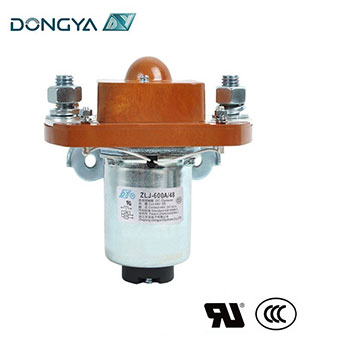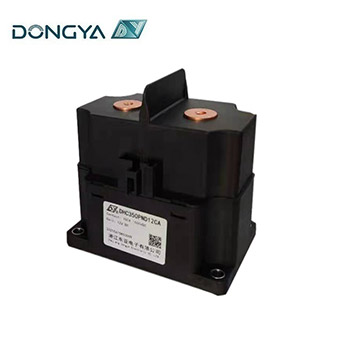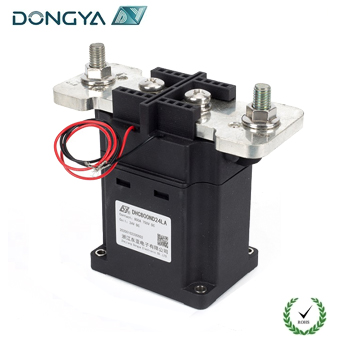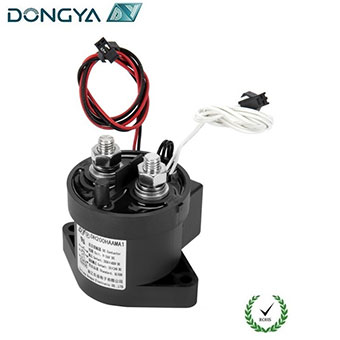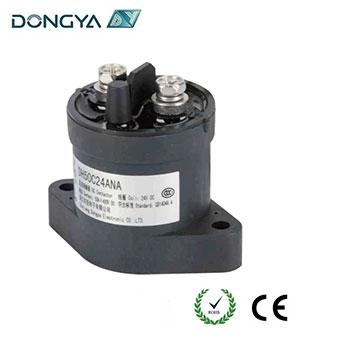In modern industrial and household electrical systems, contactors play a crucial role in controlling circuits. Specifically, DC contactors are essential components in DC (Direct Current) circuits, ensuring the smooth flow of electricity and the safe operation of equipment. So, how does a DC contactor work? What is its function in an electrical system? In this article, we will break down the principles behind DC contactors, helping you understand their applications and importance.
1. What is a DC Contactor?
A DC contactor is an electrical device used to control the opening and closing of a DC circuit. It typically consists of an electromagnet, contacts, and springs. Its primary function is to switch DC currents on and off in electrical control systems, often used in applications like controlling motors, transformers, lighting, and heating elements.
Compared to AC (Alternating Current) contactors, DC contactors are designed with special considerations to handle the characteristics of DC. Unlike AC, which periodically reverses direction, DC flows in one direction. This creates additional challenges for DC contactors, especially when the contacts open, as DC does not have a zero-crossing point to naturally interrupt the flow of current, leading to potential arcing.
2. How Does a DC Contactor Work?
The working principle of a DC contactor can be broken down into three main stages: attraction, holding, and release.
- Attraction: When current flows through the coil of the contactor, an electromagnetic force is generated, causing the contacts to close. This completes the circuit, allowing current to flow through and power the load (such as a motor).
- Holding: After the contacts close, the magnetic force from the coil continues to hold the contacts in a closed position. Even if the power supply is cut off, the magnetic field can keep the contacts closed, thanks to the retention force of the magnet.
- Release: When the control circuit is de-energized, the coil no longer produces a magnetic field. The contacts are then forced open by a spring, interrupting the circuit and stopping the load from operating.
One of the key challenges with DC contactors is dealing with arcing when the contacts open. Since DC does not have a natural zero-crossing point, any arc that forms when the contacts separate will not easily extinguish. Therefore, DC contactors are designed with special features like arc-resistant materials, heat sinks, or arc chambers to ensure safe operation.
3. Key Features and Advantages of DC Contactors
- Efficient DC current control: DC contactors efficiently control the flow of DC currents, allowing for seamless automation while ensuring that electrical equipment operates without issues.
- Reliability: High-quality DC contactors are designed with strong arc resistance, making them reliable for frequent switching operations without compromising safety.
- Wide application: DC contactors are used not only in industrial automation but also in various other fields, such as electric vehicles, solar energy systems, and power tools.
4. Applications of DC Contactors
DC contactors are used in many modern electrical systems, with applications spanning multiple industries. Some common examples include:
- Motor Control: DC contactors are commonly used to control the start, stop, and reverse operation of DC motors. They enable automated switching, ensuring the motor runs smoothly.
- Solar Energy Systems: In solar power systems, which typically involve DC circuits, DC contactors control the connection between solar panels and batteries, ensuring the system operates efficiently and safely.
- Electric Vehicles: With the rise of electric cars and electric buses, DC contactors are essential for controlling the flow of electricity between batteries and motors, as well as for charging the batteries.
- Power Tools: Many electric tools run on DC power, and contactors are used to switch the circuits on and off, ensuring that the tool operates safely and efficiently.
5. Choosing the Right DC Contactor
When selecting a DC contactor, there are several key factors to consider:
- Rated Voltage and Current: Ensure the contactor can handle the voltage and current requirements of your electrical system.
- Rated Power: Choose a contactor based on the power requirements of the motor or load that needs to be controlled.
- Arc Extinguishing Capability: Make sure the contactor has sufficient arc quenching capabilities to avoid dangerous arcing during frequent switching operations.
- Environmental Conditions: Depending on the working environment, you may need a contactor with special features like corrosion resistance, high-temperature tolerance, or enhanced protection ratings.
6. Conclusion
DC contactors are indispensable components in modern electrical control systems. With their reliability and efficiency, they are widely used in applications such as motor control, solar power systems, electric vehicles, and power tools. Understanding how DC contactors work helps clarify their importance in different industries.
If you are looking for the right electrical components for your systems, choosing a high-quality DC contactor will improve the safety, stability, and performance of your electrical system.
We hope this article has helped clarify the working principles and applications of DC contactors. If you have any questions about selecting or installing a contactor, feel free to reach out, and we will be happy to offer expert advice and service!


